- europages
- >
- COMPANIES - SUPPLIERS - SERVICE PROVIDERS
- >
- transducer sensors
Results for
Transducer sensors - Import export

IGUS® GMBH
Germany
Initiator cables, also referred to as sensor/actuator cables, connect control units and different sensors, or, in the case of reversal of the measurement principle, actuators. Frequently used abbreviations include ini or ini cable (plural: inis). Sensor or measurement transducers transform physical quantities such as rotation, speed, distance or length into analogue electric impulses. In the case of an actuator, the measured electric current (symbol: I, unit: ampere; A) or voltage (symbol: U, unit: volt; V) is transformed into temperature, pressure or torque. The connection cable consists of at least three cores with a small cross-section of between 0.14mm² and 0.34mm². In the simplest case, two cores are required for supplying the voltage, while the last core transmits an I/O signal. For sensitive applications, there are shielded versions in addition to the traditional ini cables to avoid EMC disruptions (electromagnetic compatibility).
Request for a quote
GNEUSS KUNSTSTOFFTECHNIK GMBH
Germany
The DAP Series incorporate a heated sensor tip, which limits the potential for sensor damage relating to the membrane, resulting from installation or removal of the pressure transmitter. The Gneuss patented heated sensor tip allows the sensor to be easily removed from a “frozen” melt without any problems. The diaphragm is not damaged when the polymer contracts. The DAP has revolutionized the handling of critical medias, for example PC, PMMA or ABS.
Request for a quote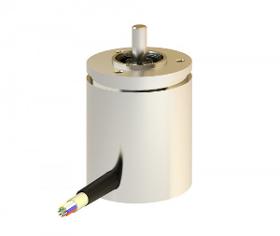
TWK-ELEKTRONIK GMBH
Germany
A CAN controller at the output enables integration into the CANopen network. According to CANopen Application Layer and Communication Profile, CiA Draft Standard 301, Version 4.1 and "Device Profile for Encoders CiA Draft Standard Proposal 406 Version 3.0" and CANopen Layer setting Services and Protocol (LSS), CiA DSP 305.
Request for a quote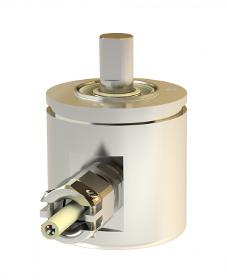
TWK-ELEKTRONIK GMBH
Germany
The angle transducers have a magnetic scanning according to the HALL principle. Due to the robust design, critical and interference-free applications in harsh environments can be realized. They have a robust housing (wall thickness > 5 mm) made of aluminium or stainless steel, shaft and ball bearing made of stainless steel, shaft with flattening, rotor with shaft and permanent magnet mounted in prechamber, sensor circuit consisting of ASIC with Hall elements and interface electronics housed in closed main chamber. Two models are available: For low and high temperature applications. The model for low-temperature use is equipped with a special grease for bearings and shaft seal. Seals and shaft seal are made of PTFE. Cable gland with clamping jaw pressure screw and silicone seal. The model for high temperature use is without shaft seal. Under the rear cover there is a signal changeover switch (CW/CCW). On the side there is a preset button (4 mA) placed under a screw plug.
Request for a quote
TWK-ELEKTRONIK GMBH
Germany
Robust case with wall thickness of 5 mm either in seawater resistant aluminum or in stainless steel - shaft and ball bearings in stainless steel - rotating components with permanent magnet in front chamber - electronic circuit with ASiC and Hall elements and interface components fitted within main chamber, separated from rotating components by a metallic wall - optional potting against water jets (IP 69K) - electrical connections via round plug or lead exit.
Request for a quote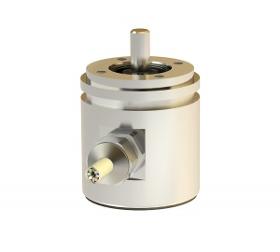
TWK-ELEKTRONIK GMBH
Germany
Robust aluminium or stainless steel housing (wall thicknesses up to 5 mm) - stainless steel shaft and ball bearing - ball bearing with Simmer ring, rotor with shaft and permanent magnet mounted in pre-chamber - sensor circuit consisting of ASIC with Hall elements and interface electronics in enclosed main chamber - housing protection type IP 69K additionally cast - electrical connection via cable (open cable ends).
Request for a quote
TWK-ELEKTRONIK GMBH
Germany
Recording of the angular position and revolutions by means of Hall sensors - multiturn version with absolute transmission for up to 4096 revolutions - data output plus parameterisation and diagnosis via Profibus-DP. Robust housing manufactured from seawater-proof aluminium or stainless steel - stainless steel shaft - ball bearing with radial shaft seal - sensor circuit consisting of ASIC with Hall elements - electrical connections via the connecting cap with threaded cable connections. The absolute encoders are designed for direct connection to the PROFIBUS-DP. The interface is implemented with the SPC3 Siemens PROFIBUS controller. The protocol corresponds to DP-Slave Class 2 functionality in accordance with Profibus profile for encoders, No. 3.062, and is described in detail in the TRD 12770 user manual. The TRD is mechanicallly and electrically compatible with the electro-optical encoder CRD.
Request for a quote
TWK-ELEKTRONIK GMBH
Germany
A positive mechanical connection between the customer shaft and the sensor shaft ensures that the magnet of the sensor shaft accurately reproduces the rotation of the customer shaft. The TBE measures one revolution, i.e. a maximum of 16,384 steps/revolution. With the trailing absolute gear, the TRE rotary encoder achieves a measuring range of up to 4096 revolutions. The zero point and the code progression can be set or changed via the inputs 'Set input' and 'Codevelauf' (each input circuit E1).
Request for a quote
GNEUSS KUNSTSTOFFTECHNIK GMBH
Germany
Melt Pressure Transducer with standardized output signal The DA Series melt pressure transducers are characterized by their high quality of workmanship and outstanding performance and are used in the plastic manufacturing and processing industries throughout the world. Their absolute reproducibility and stable measuring values contribute to our measurement accuracies. Application areas up to 300°C (572 °F) Pressure ranges from 0-50 and 0-2.000bar (0-725 and 29,000 psi) Liquid filled measuring system Maximum reliability through new membrane technology Standard G-coating to counteract adhesive materials 100% market compatible Mercury free version available at no additional surcharge
Request for a quote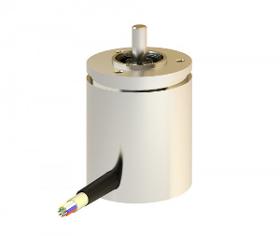
TWK-ELEKTRONIK GMBH
Germany
Robust case either in seawater resistant aluminum or in stainless steel - shaft in stainless steel - rotating components with permanent magnet in front chamber - electronic circuit with ASiC and Hall elements and interface components fitted within main chamber, separated from rotating components by a metallic wall - optional potting against water jets (IP 69K) - electrical connections via cable leads with inspection plug.
Request for a quote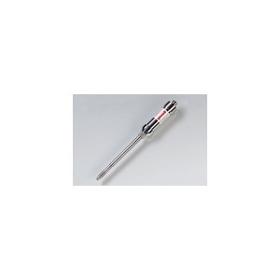
GNEUSS KUNSTSTOFFTECHNIK GMBH
Germany
With the DAIX Series, Gneuss now has an explosion proof pressure transducer available. This melt pressure transducer is intrinsically safe. The uncompromising development of the DAIX provides an excellent choice for Ex-areas, complimenting years of tried and tested Gneuss products.
Request for a quote
GNEUSS KUNSTSTOFFTECHNIK GMBH
Germany
The DTA defines the industry standard in combination with temperature measurement. One process connection suffices to measure both values. The unit excels in its high quality workmanship and cost efficiency. Its absolute reproducibility and stable measuring values contribute to our measurement accuracies.
Request for a quote
GNEUSS KUNSTSTOFFTECHNIK GMBH
Germany
Pressure Transmitter with Integrated Amplifier and Integrated Temperature Measurement The DTAI first of all offers the user the comfort of operating a DAI in combination with temperature measurement. One process connection suffices in order to measure both values. These model offers mA and V output signals for further processing. The popular and most commonly used 2-wire and 4-20 mA configuration provide unequalled interference in critical environments. Liquid filled measuring system Maximum reliability through new membrane technology Standard G-coating to counteract adhesive materials Combined pressure and temperature measurement Robust design with G-Armor flexible components Applications with process medias of up to 400°C (750°F) possible Pressure ranges from 0-50 and 0-2.000 bar (0-725 to 29,000 psi) available Interference resistant signals over long distances Stable output signals
Request for a quote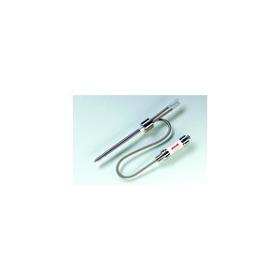
GNEUSS KUNSTSTOFFTECHNIK GMBH
Germany
The DAIP Series incorporates a heated sensor tip, which limits the potential for sensor damage relating to the membrane, resulting from installation or removal of the pressure transmitter. Additionally, it offers the comfort of the DAI series in combination with temperature measurement, allowing for heater control. The Gneuss patented heated sensor tip allows the sensor to be easily removed from a “frozen” melt without any problems. The diaphragm is not damaged when the polymer contracts. The DAIP has revolutionized the handling of critical medias, for example PC, PMMA or ABS. Heater with 24V Patented technology Maximum reliabilty through new membrane technology G-coating to counteract adhesive materials Robust design with G-Armor flexible components Interference resistand signals over long distances 3- and 4-wire technology available With integrated amplifier 0-20 mA, 4-20 mA, or 0-10 V output
Request for a quote
GNEUSS KUNSTSTOFFTECHNIK GMBH
Germany
The DAIL fulfils the requirements of EN 1114-1 for overpressure protection of extrusion lines and offers maximum comfort of operation. The auto-zero function enables calibration directly on the device or from the observation point/controller. On the output side, the melt pressure transmitter provides a switch output in addition to the analog signal which enables switching off the machine in case of overpressure according to EN 13849-1, PL=c.
Request for a quote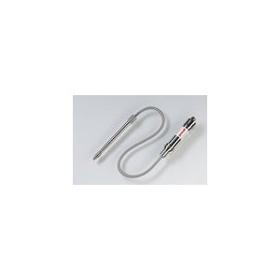
GNEUSS KUNSTSTOFFTECHNIK GMBH
Germany
Melt Pressure Transducer with Integrated Amplifier The DAI Series offers – in addition to maximum reliability – improved user friendliness in the form of an Auto-Zero Function for local or remote configuration. These models offer mA and mV output signals for further processing. The popular and most commonly used 2-wire and 4-20mA configuration provide unequalled interference in critical environments.
Request for a quote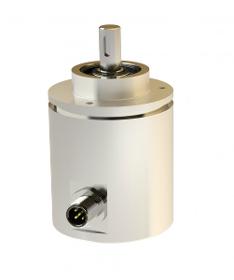
TWK-ELEKTRONIK GMBH
Germany
A positive-locking mechanical connection between the cus-tomer’s shaft and the sensor shaft ensures that the magnet in the sensor shaft precisely reflects the rotation of the cus-tomer’s shaft. With the TBN model, one rotation (i.e. max. 16,384 steps) is recorded.With the subsequent absolute transmission, the TRN shaft encoder reaches a measuring range of up to 4096 rotations. The position and speed values (PDO - Process Data Object) are output via the CANopen protocol.
Request for a quoteDo you sell or make similar products?
Sign up to europages and have your products listed

TWK-ELEKTRONIK GMBH
Germany
The displacement transducers work according to the principle of the differential choke (inductive half bridges). They consist of two coils which are encapsulated in a Mu metal cylinder in a sealed and vibration-proof manner. A Mu-metal plunger causes an opposite induction change in the two coils when displaced by the hollow coil body. The displacement transducers are designed for an oscillator frequency of 10 kHz. Power supply and signal conditioning are provided by external module modules.
Request for a quote
TWK-ELEKTRONIK GMBH
Germany
Robust case either in seawater resistant aluminum or in stainless steel - shaft in stainless steel - rotating components with permanent magnet in front chamber - electronic circuit with ASiC and Hall elements and interface components fitted within main chamber, separated from rotating components by a metallic wall - optional potting against water jets (IP 69K) - electrical connections via cable leads with inspection plug.
Request for a quote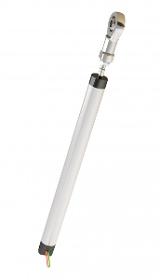
TWK-ELEKTRONIK GMBH
Germany
Cylindrical case in anodised aluminium - Shaft in stainlesssteel - Conductive plastic resistance elements - Precious-metal wipers - Axial connector or radial leads - Ball joints atshaft end and / or case at option - spring return (gauge) at option.
Request for a quote
TWK-ELEKTRONIK GMBH
Germany
The displacement transducers work according to the principle of the differential choke (inductive half bridges). They consist of two coils which are encapsulated in a Mu metal cylinder in a sealed and vibration-proof manner. A Mu-metal plunger causes an opposite induction change in the two coils when displaced by the hollow coil body. The displacement transducers are designed for an oscillator frequency of 10 kHz. Power supply and signal conditioning are provided by external module modules.
Request for a quote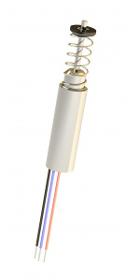
TWK-ELEKTRONIK GMBH
Germany
The displacement transducers operate according to the principle of the differential choke, i.e. an inductive half bridge. They consist of two coils which are encapsulated in a stainless steel cylinder ensuring positive protection against vibration, shock, humidity, oil and corrosive matter. A mu-metal plunger core causes opposing changes of inductance when it is displaced through the centre of the coils. The displacement transducers are designed for a carrier frequency of 10 kHz. Other frequencies can be used but may involve changes of output values.
Request for a quote
TWK-ELEKTRONIK GMBH
Germany
The linear transducers operate according to the differential throttle principle (inductive half-bridges). They consist of two coils which are impermeably cast into a Mu-metal cylinder, where they are protected from vibrations. On displacement through the hollow coil body, a Mu-metal plunger leads to a change in the induction direction in both coils. The linear transducers are designed for an oscillator frequency of 10 kHz. The supply and signal processing are carried out by external modules.
Request for a quote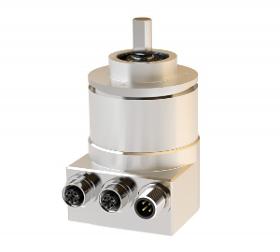
TWK-ELEKTRONIK GMBH
Germany
Recording of the angular position and revolutions by means of Hall sensors - multiturn version with absolute multiturn transmission for up to 4096 revolutions - data output plus parameterisation and diagnosis via PROFINET. Robust housing manufactured from seawater-resistant aluminium or stainless steel - stainless steel shaft - ball bearing with radial shaft seal-sensor circuit consisting of ASIC with Hall elements - electrical connection via M12 connector or cable outlet. The Profinet interface according to IEC 61158 / 61784 or PNO specifications order No. 2.712 and 2.722, version 2.2, is integrated into the model series TRT absolute encoders. Real time classes 1 - 3 are supported, i.e. Real Time (RT) and Isochronous Real Time (IRT) plus the requirements of conformance class C. Setting the address, baud rate or terminating resistances is not necessary. A name, which is stored in the absolute encoder's non-volatile memory, is assigned via the PROFINET controller to address the device.
Request for a quote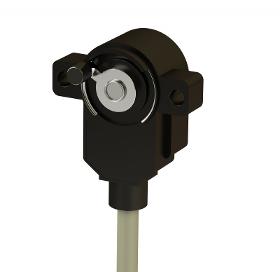
TWK-ELEKTRONIK GMBH
Germany
Impact-resistant, sealed plastic housing, resistant to splash water, fuels, motor oils and antifreeze - Actuation via angled metal lever - Return spring fitted - Resistance element made of conductive plastic - Multiple contact grinder made of precious metal - Resistance for current limitation fitted in the grinder circuit - Fastening via two side round holes - Electrical connections via side cable outlet with AMP plug.
Request for a quote
TWK-ELEKTRONIK GMBH
Germany
Rectangular case in anodised aluminium - Shaft in stainless steel - Shaft entry either with floating guidence against dust (AF) or with lip seal (AG) to protection grade IP 65 - Conductive plastic resistance elements - Precious metal wipers - Axial connector or axial or radial cable exit - Ball joints at shaft end and / or case on request.
Request for a quote
TWK-ELEKTRONIK GMBH
Germany
Plastic housing - stainless steel shaft - conductive plastic element with precious metal wiper - central mounting thread M6 x 0.75 in brass - potted rear solder pins.
Request for a quote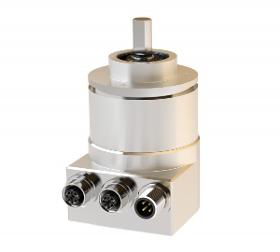
TWK-ELEKTRONIK GMBH
Germany
Recording of the angular position and revolutions by means of Hall sensors - absolute multiturn transmission for up to 4096 revolutions - data output plus parameterisation and diagnosis via EtherCAT. Robust housing (housing sickness 5 mm) manufactured from seawater-resistant aluminium (AlMgSi1) or stainless steel - stainless steel shaft - ball bearing with shaft seal - sensors circuit consisting of ASIC with Hall elements - electrical connection via M12 connector or cable outlet. In the model series TRK absolute encoders, the EtherCAT interface is integrated according to IEC 61158-2 to 6 and encoder profile CiA DSP406. As a "full slave", the TRK supports all EtherCAT addressing modes such as logical addressing, position addressing and node addressing. Use of the CANopen over EtherCAT message and the CANopen encoder profile enable parameter and diagnostic data handling as familiar from CANopen. These are contained in an object directory under the same indices as in the case of CANopen.
Request for a quote
TWK-ELEKTRONIK GMBH
Germany
Recording of the angular position and revolutions by means of Hall sensors - data output plus parameterisation and diagnosis via PROFINET. Robust housing manufactured from seawater-resistant aluminium or stainless steel - stainless steel shaft - ball bearing with radial shaft seal-sensor circuit consisting of ASIC with Hall elements - electrical connection via M12 connector or cable outlet. The Profinet interface according to IEC 61158 / 61784 or PNO specifications order No. 2.712 and 2.722, version 2.2, is integrated into the model series TRT absolute encoders. Real time classes 1 and 3 are supported, i.e. Real Time (RT) and Isochronous Real Time (IRT) plus the requirements of conformance class C. To achieve the SIL2 level, the TRT/S3 contains addtitional internal monitoring mechanisms as well as safe communication via PROFIsafe. The PROFIsafe protocol is implemented according to the PROFIisafe Profile for Safety Technologie version 2.4 (PNO Order No. 3.192)
Request for a quoteResults for
Transducer sensors - Import exportNumber of results
40 Products